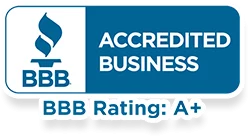- Lightning
- Problems with the utility company’s equipment
- Large appliances cycling power on and off
- Faulty wiring
- Downed power lines
Whole-House Surge Protector Installation in Webster & the Greater Rochester Area
Let Lon Lockwood Electric protect your valuable electronics with a whole-house surge protector. If you’re like most people, you probably have a few power strip surge protectors throughout your house to protect your home from power surges. Unfortunately, most provide little to no protection against power surges.
For whole-house surge protection at your Webster or Rochester, NY, home, call Lon Lockwood Electric at (585) 766-4702 or contact us online.
What Causes Power Surges?

What Is at Risk?
All items that have a microprocessor are at risk during a power surge. This includes items like:
- Televisions
- Computers and telephones
- Refrigerators
- Washers and dryers
- Ovens and microwaves
- Alarm systems
If an electrical surge were to occur today, how much money would you stand to lose? For many modern homeowners, that could mean huge losses without residential surge protection.
It’s wise to be prepared before the next electrical surge hits your home. Our expert electricians can help you select and install a whole-house surge protector that will protect your power lines, cable, and telephone lines.
See What Your Neighbors Are Saying
“We’ve used Lon Lockwood for a number of jobs now, ranging from small to large. Always professional, always on time and they’re probably the cleanest electricians we’ve ever met. They take care not to make a mess and they thoroughly clean up after the job. They’re awesome!” — Mark F.
Benefits of Residential Surge Protection From a Whole-House Surge Protector
If you protect yourself from a power surge at the source, you’ll experience benefits like greater protection for your entire system. For homes with aging wiring or outdated breaker panels, combining a whole-house surge protector with a panel upgrade or replacement provides the most complete line of defense against voltage spikes. You’ll also enjoy benefits like:
- Saving time & money: After an electrical surge, all your neighbors will be calling electricians to replace the microprocessors in their electronics. They’ll have to spend countless dollars to replace electronics that no longer work. But, if you have a whole-home surge protector, you can relax knowing that once the power returns, all your expensive electronics will work like normal.
- Insurance: Whole-home surge protectors can provide a type of inexpensive insurance when compared to the cost of replacing all your electronics.
- Sales advantage: Differentiate your house from all the other houses on the market with a whole-house surge protector. It’s an inexpensive way to set your house apart from the competition. This is a great feature for home builders, offering buyers a unique benefit.
- Peace of mind: You can relax the next time a lightning storm occurs or the next power surge hits your area. You can rest assured your electrical devices are protected.
It takes seconds to destroy countless expensive electronic devices, so don’t wait until it’s too late.
Call Lon Lockwood Electric at (585) 766-4702 or contact us to get your whole-house surge protector.
Note: To protect yourself from surges that originate within the house, it’s a good idea to take extra precautions and continue to use power strip/surge protectors for extra sensitive or expensive devices.
How Do I Safely Use a Surge Protector?
Every year, home fires occur because surge protectors are not properly used. To make sure you’re properly and safely using your surge protectors, here are some helpful safety tips:
- Remember that retail surge protectors are for light loads only (like indoor lights, computers, printers, and low-amperage equipment). They are NOT for fans, heaters, coffeemakers, or other similar devices.
- ALL units should be electrical approved or Underwriters Laboratory (UL) approved.
- Each surge protector should be plugged into an outlet, NOT another surge protector or portable power strip. This can cause overloading.
- If a large surge or spike occurs, the surge protector will have to be replaced.
- Use only surge protectors that have an internal circuit breaker. This will prevent a fire if the surge protector is overloaded or shorted.
- Check the electrical load of the surge protector. You can tell if it’s overloaded if it’s hot to the touch.
- Do NOT use surge protectors in wet or moist areas. If it needs to be in a moist area, be sure it’s protected by a GFCI unit.
- Place the surge protector where it can get enough air circulation. Avoid placing it under the carpet, furniture, or other places where air circulation is inhibited.
- Consider purchasing surge protection with cable and phone jacks to protect your phone, television, and computer modem.
- Check your surge protectors regularly to ensure they’re in good condition and functioning properly.
- Do not use an ungrounded adaptor (a two-pronged adaptor) to plug in a surge protector. Use a three-pronged adaptor.
- Not all surge protectors are created equal. Make sure the one you purchase can handle your needs.
- Consider installing a surge arrester at the fuse box or electrical panel for complete residential surge protection. This is especially good to have for homes in areas with lots of lightning.
Call (585) 766-4702 or contact us to learn more about the advantages of professionally installing a whole-house surge protector.
Additional Surge Protector Frequently Asked Questions
6 Reasons to Choose Lon Lockwood
Trust the Experts to Take Care of Your Electrical Needs!- Every call is answered by a live representative.
- We are always on time, no matter what!
- Our entire staff is courteous and professional.
- All employees pass drug and background checks.
- We operate cleanly and efficiently. No mess left behind!
- We have a no nonsense, 100% guarantee!
Awards
Whether you require full electrical installations, repairs, or maintenance in Webster, Rochester, or the surrounding counties, call Lon Lockwood Electric today.
Let's Get Started



